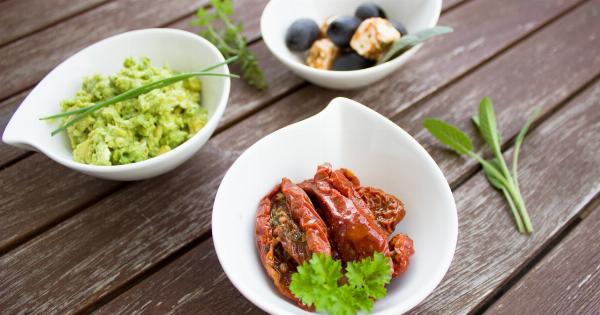When it comes to maintaining a healthy diet, consuming fruits and vegetables is considered essential.
Not only are they packed with essential vitamins, minerals, and fiber, but they also provide vital antioxidants that help protect against various diseases. However, it is important to consider the presence of pesticide residues on these crops, as exposure to high levels of pesticides can have adverse health effects.
In this article, we will explore the fruits and vegetables with the highest and lowest pesticide residues, allowing you to make informed choices about the produce you consume.
Highest Pesticide Residues in Fruits and Vegetables:
1. Strawberries:.
Strawberries often top the list of fruits with high pesticide residues. Due to their delicate nature and susceptibility to pests, strawberries are heavily sprayed with pesticides to protect them during their growth cycle.
2. Spinach:.
Spinach is notorious for its high pesticide residue levels. A leafy green vegetable, spinach is often grown in open fields, making it vulnerable to a wide range of pests and requiring heavy pesticide use.
3. Kale:.
Similar to spinach, kale is another leafy green vegetable often found with high levels of pesticide residues. Its densely packed leaves provide an ideal environment for pests, resulting in increased pesticide application.
4. Nectarines:.
Nectarines, like other stone fruits such as peaches, plums, and cherries, are often exposed to high levels of pesticides. Their soft skin and relatively small size make them susceptible to various pests.
5. Apples:.
Apples are one of the most commonly consumed fruits globally. Unfortunately, they are also among the fruits with the highest pesticide residue levels. To protect apple crops from pests, pesticides are frequently applied during their growth.
6. Grapes:.
Grapes, particularly those imported from outside the country of consumption, often contain high pesticide residues. The use of pesticides in vineyards is extensive due to the vulnerability of grapes to pests and diseases.
7. Peaches:.
Peaches, with their soft and fuzzy skin, often harbor high pesticide residues. Pests such as aphids and mites are attracted to the delicate skin of peaches, leading to increased pesticide use during their cultivation.
8. Cherries:.
Cherries, like other stone fruits, are prone to pests and diseases, necessitating the use of pesticides. Their small size and attractive flavor make them a favorite target for pests, resulting in higher pesticide application.
9. Pears:.
Pears are another fruit that is commonly treated with pesticides. Providing insect-free pears can be challenging due to the susceptibility of the fruit to pests, leading to a higher presence of pesticide residues.
10. Tomatoes:.
While tomatoes may not always rank as high as other fruits and vegetables, they are often found with moderate levels of pesticide residues.
This is particularly true for conventionally grown tomatoes, as organic farming methods restrict the use of synthetic pesticides.
Lowest Pesticide Residues in Fruits and Vegetables:
1. Avocados:.
Avocados are considered one of the safest fruits when it comes to pesticide residues. Their thick skin protects the fruit from external contaminants, making them less likely to absorb pesticides.
2. Sweet Corn:.
Sweet corn has relatively low pesticide residue levels, making it a good choice when seeking produce with minimal exposure to pesticides.
However, it is important to note that genetically modified (GMO) corn may have higher pesticide residues due to the incorporation of pest-resistant traits.
3. Pineapples:.
Pineapples are another fruit with relatively low pesticide residues. Their tough outer skin provides a natural protection against pests, reducing the need for excessive pesticide use.
4. Cabbages:.
Cabbages generally show lower levels of pesticide residues compared to other leafy green vegetables. However, it is advisable to remove the outer leaves and wash them thoroughly before consumption, regardless of pesticide residue levels.
5. Onions:.
Onions are known to have minimal pesticide residues. Their pungent odor and layered structure help deter pests, resulting in limited pesticide use during cultivation.
6. Papayas:.
Papayas are often found with low pesticide residue levels. However, it is recommended to opt for organic papayas to minimize the exposure to any potential pesticide residues.
7. Asparagus:.
Asparagus is a vegetable with relatively low pesticide residues. Its unique shape and texture make it less attractive to pests, reducing the need for extensive pesticide application.
8. Broccoli:.
Broccoli generally contains lower pesticide residues compared to other cruciferous vegetables. However, it is always advisable to wash and cook broccoli thoroughly to minimize any potential residue presence.
9. Sweet Peas:.
Sweet peas, when it comes to pesticide residues, tend to have lower levels compared to other crops. However, it is important to wash them thoroughly to remove any possible surface residues.
10. Mangoes:.
Mangoes, particularly organically grown ones, typically have relatively low pesticide residue levels. However, it is important to thoroughly wash the skin before consuming to remove any potential residue or dirt.

























